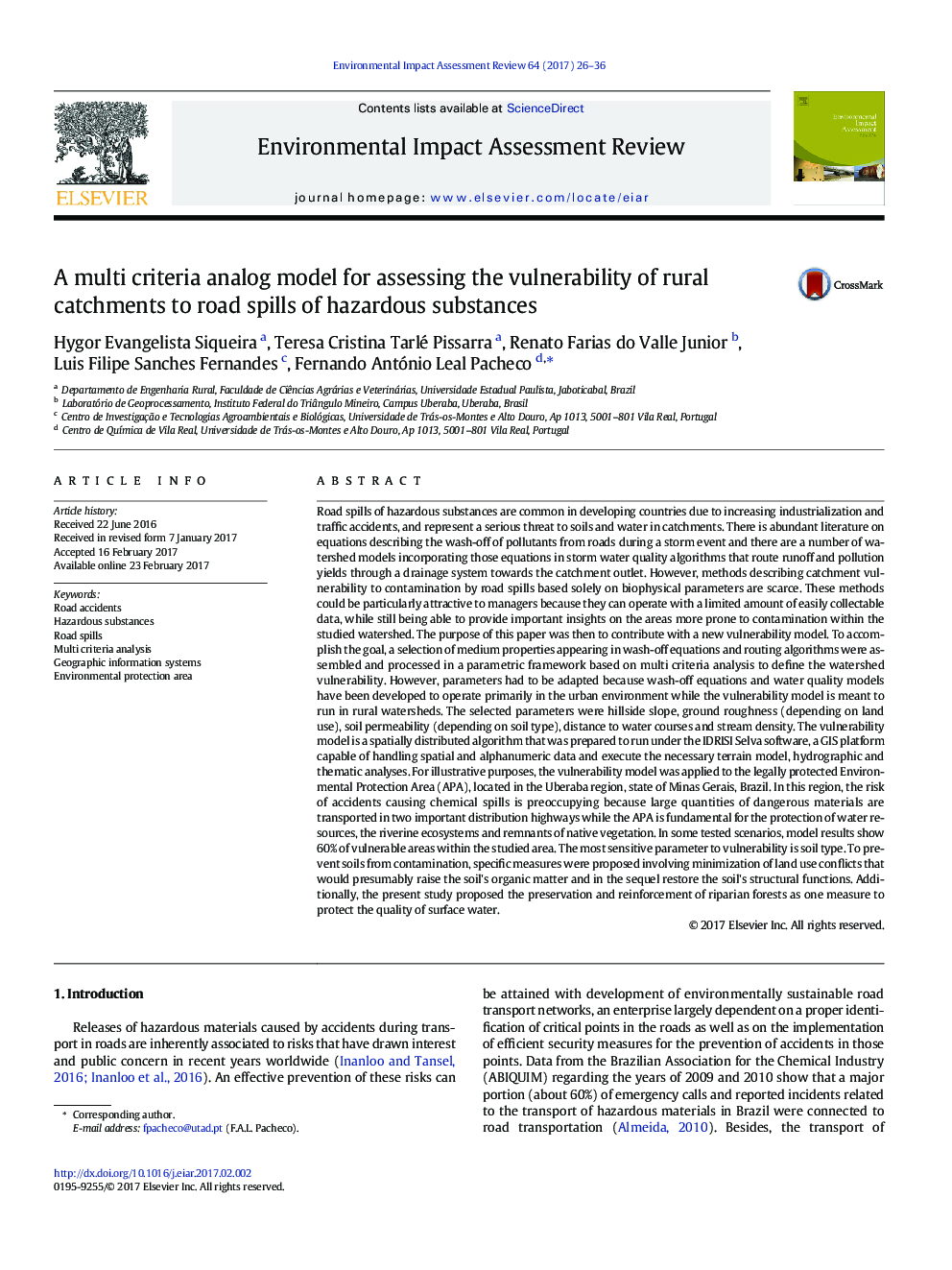| کد مقاله | کد نشریه | سال انتشار | مقاله انگلیسی | نسخه تمام متن |
|---|---|---|---|---|
| 5115645 | 1484981 | 2017 | 11 صفحه PDF | دانلود رایگان |
- A multi criteria analog model was developed to assess rural catchment vulnerability along roads.
- Model parameters were defined by analogy with urban wash-off equations and routing algorithms.
- The model mixes up various biophysical and socio-economic parameters.
- Model application was based on a scenario analysis.
- The study is focused on the Environmental Protection Area of Uberaba River, Brazil.
Road spills of hazardous substances are common in developing countries due to increasing industrialization and traffic accidents, and represent a serious threat to soils and water in catchments. There is abundant literature on equations describing the wash-off of pollutants from roads during a storm event and there are a number of watershed models incorporating those equations in storm water quality algorithms that route runoff and pollution yields through a drainage system towards the catchment outlet. However, methods describing catchment vulnerability to contamination by road spills based solely on biophysical parameters are scarce. These methods could be particularly attractive to managers because they can operate with a limited amount of easily collectable data, while still being able to provide important insights on the areas more prone to contamination within the studied watershed. The purpose of this paper was then to contribute with a new vulnerability model. To accomplish the goal, a selection of medium properties appearing in wash-off equations and routing algorithms were assembled and processed in a parametric framework based on multi criteria analysis to define the watershed vulnerability. However, parameters had to be adapted because wash-off equations and water quality models have been developed to operate primarily in the urban environment while the vulnerability model is meant to run in rural watersheds. The selected parameters were hillside slope, ground roughness (depending on land use), soil permeability (depending on soil type), distance to water courses and stream density. The vulnerability model is a spatially distributed algorithm that was prepared to run under the IDRISI Selva software, a GIS platform capable of handling spatial and alphanumeric data and execute the necessary terrain model, hydrographic and thematic analyses. For illustrative purposes, the vulnerability model was applied to the legally protected Environmental Protection Area (APA), located in the Uberaba region, state of Minas Gerais, Brazil. In this region, the risk of accidents causing chemical spills is preoccupying because large quantities of dangerous materials are transported in two important distribution highways while the APA is fundamental for the protection of water resources, the riverine ecosystems and remnants of native vegetation. In some tested scenarios, model results show 60% of vulnerable areas within the studied area. The most sensitive parameter to vulnerability is soil type. To prevent soils from contamination, specific measures were proposed involving minimization of land use conflicts that would presumably raise the soil's organic matter and in the sequel restore the soil's structural functions. Additionally, the present study proposed the preservation and reinforcement of riparian forests as one measure to protect the quality of surface water.
311
Journal: Environmental Impact Assessment Review - Volume 64, May 2017, Pages 26-36
